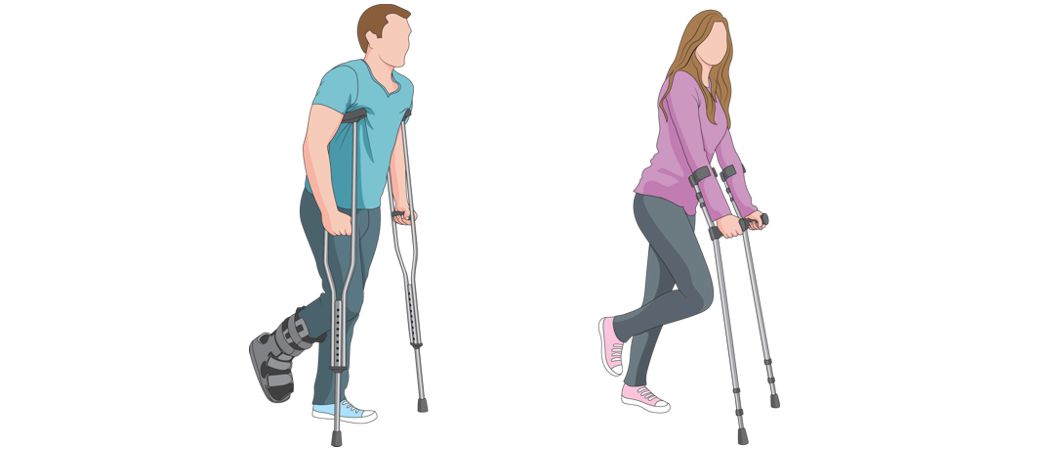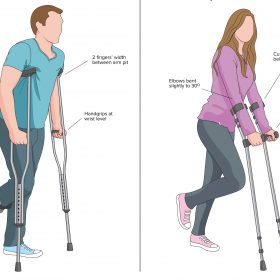Crutches: Underarm or Forearm, what is the right choice for me?
For someone trying to choose just the right crutches, weighing all possible pros and cons is important. It’s not just something that can be decided upon on a whim or a coin toss. The most basic thing to cover is to find out more about the two different types of crutches: the underarm crutches and the elbow crutches (also referred to as forearm crutches).
What are the differences between underarm or forearm crutches?
Underarm (axilla) crutches are more often used for short term injuries, and are commonly recommended for users who can only bear weight with one leg. Lightweight and durable, these crutches are mostly made of aluminum designed with height adjustable handgrips and legs.
In comparison, elbow or forearm crutches are recommended for long-term use for those who can weight bear with both legs but simply require additional support with their mobility.
Setting the right height
UNDERARM CRUTCHES:
- Stand tall with your shoes on.
- Put the crutches under your arms. Relax your arms and let them hang down over the crutches. There should be 1-1 ½ inch (or approximately 2 fingers’ width) space between your armpit and the top of the crutch with your hands hanging relaxed.
- The hand grips should be at the level of your wrist when holding the hand grips.
- Your elbows should be bent slightly to about thirty degrees.
FOREARM CRUTCHES:
- Stand tall with your shoes on. Relax your shoulders with your arms hanging loosely at your sides.
- The height of the handgrips should be at the crease of your wrist when holding the hand grips.
- To adjust the height, depress the spring button so the leg to lengthen or shorten to achieve the desired height.
- Once the height is properly adjusted, your elbow should be bend slightly to about 30ᴼ
Adjusting the cuff
- The cuff should be 1-2 inches below the bend of the elbow
- To adjust the height, depress the spring button on each cuff to lengthen or shorten to achieve the proper sizing
Using your crutches
STANDING UP
To stand up, take your crutches in one hand by holding the hand grips. Push down with your other hand on the chair.
SITTING DOWN
To sit down, hold both crutches in one hand by holding the hand grips together and reach for the chair with your other hand and lower yourself into the chair slowly.
WALKING – WITH SOME WEIGHT BEARING
To take a step, squeeze the crutches between your upper arms and ribs put the weight through your hands not your armpits.
Move the crutches forward. Move your injured leg forward and put your foot even with the crutches. Put as much weight as you are allowed on the injured leg, taking the rest of the weight through your arms and hands.
Step past with your stronger leg.
In summary, move the crutches first, your injured leg next, and then your stronger leg.
WALKING – WITH NO WEIGHT BEARING
Place your crutches in front of you and sway forward with your hips.
Swing your good leg forward between the crutches, stepping down next to your crutches.
For more information on the use of crutches, view BJC HealthCare’s video HERE.


